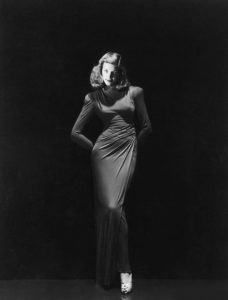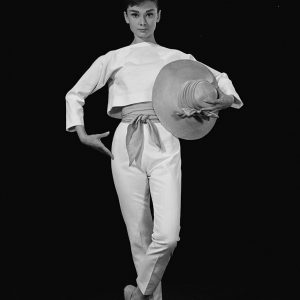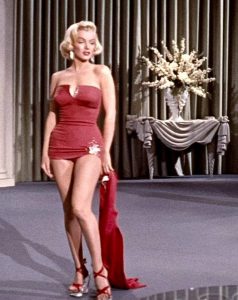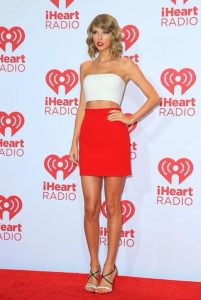Some people seem to view the book as completely separate from “new” Kibbe, as if what he does on Facebook is totally removed from what he wrote in 1987. What he does on Facebook and on his website is painted as something totally different from what he said before. David has continued to work and develop his theory since the book came out, so naturally some things have indeed changed:
The Clothing Checklist.
Part of this impression stems from the fact that only selected portions of the book have made it to the internet, primarily the quiz and the descriptions of the Image IDs and their recommendations. This not only makes it seem like the system is a set of stereotypes you fit into, but, since nearly 35 years have passed since the book’s publication and clothing construction has changed radically, we are not limited to exact styles described in the book. In fact, due to these changes in clothing construction, trying to replicate the effects in modern styles might actually not even work. I think this is especially true for anyone who has to accommodate width or curve. “Flow” or “drape” in a non-stretchy material is very different from a stretchy cotton jersey, for instance. Clothing construction now means that clothing also tends to take shape of the body it is on, instead of the other way around. So one garment may suit several IDs, but they would all style it differently.
Classic, Gamine, and Natural are no longer given as an Image Identity on their own.
Everyone now is either the Soft or Flamboyant/Dramatic versions of these IDs. This also has the effect of broadening the descriptions of these IDs, since people who may have been one of these base IDs are now in the Soft or Flamboyant/Dramatic category. There are going to be SGs and FGs, for instance, who are going to be closer to the 50/50 split than before, but still, one of the two will win out. (This is not something that Kibbe has said, but rather my assumption based on the fact that these IDs once existed, and now do not.)
Makeup!
I don’t think any of us would want to wear 80s makeup, and David doesn’t want that for us either. David now prescribes the same watercolor technique for everyone, and you work with your bone structure. Glossy lips are also favored for all. So please, do not listen to YouTube videos that try to follow the heavy 80s makeup recommended!
Height.
The upper limits still pretty much hold true, but there is no lower limit for height in an Image ID, and SG and FN are no longer portrayed as the only ones that are “very petite” and “very tall,” respectively.
What Hasn’t Changed
As I said in the beginning, sometimes people act is the book is just completely outdated, and what David teaches you in Strictly Kibbe is completely different. But when I go back to the book and read it, I see the same David on the page as the one I encounter in Strictly Kibbe.
The Process.
What unfortunately didn’t make it online–and what I really wish had!–is all of the content besides the quiz and the descriptions. In the book, David lays out how his system is different and the idea at the heart of it (creating your unique “Total Look” by integrating your finite outer appearance with your infinite inner self). He then introduces you to yin and yang as used in the system, and how you can rectify these two different selves, if there is a conflict. There are 25 pages of text before you even get to the quiz, and then there is a fantasy quiz, for you to understand your inner self better. Like today, you are thinking about yourself and your dreams, and you understand yin and yang, before you ever get to the quiz. The lack of this foundation in yin and yang is why people have such trouble with the quiz. I remember the first time I took it I scored myself as extremely yin, because I didn’t really understand that measurement and shape weren’t the same thing.
The Fundamental Yin/Yang Balances and Image ID Descriptions.
This is the portion before the checklist, where he describes each Image ID. This is really where I find the “meat” of the information about the Image IDs. They make it clear to me why David got rid of the “middle” types, because I think these work even when you don’t have those. For instance, for FG, the description of the yin/yang balance says: “Physically, you are Yang in shape (angular), Yin in size (height). Both sides are important, but Yang is dominant.” This makes complete sense to me as an FG. SG is “slightly angular” in bone structure and “Yin in shape (curvy flesh, rounded features).”
He describes the overall silhouette like this:
Your overall silhouette is composed of Yang shapes: very angular and geometric, straight lines with sharp edges. Your important Yin secondary characteristics are expressed by working with broken and staccato lines and detail.
This alone captures how I approach dressing for my yin/yang balance. Armed with this, I really don’t need all those “recs.” I work with these angular-but-short straight lines and add detail.
Color.
David’s color system seems to be largely ignored, but I definitely feel like he regards color as equally important to line. He teaches it basically exactly as described in the book, and works with the same seasons and, while the makeup application techniques have changed, the same colors still work.
If you have the book, I would definitely pull it out and read it and see whether you can see Contemporary Kibbe in its pages. I know it’s now hundreds of dollars on Amazon, but it really is a wonderful book with a lot of insight. He says he will write another, so let’s cross our fingers!
These are just the things that came to me when looking through the book, so if you have any other questions about the book vs. what David says today, please leave them in the comments.



